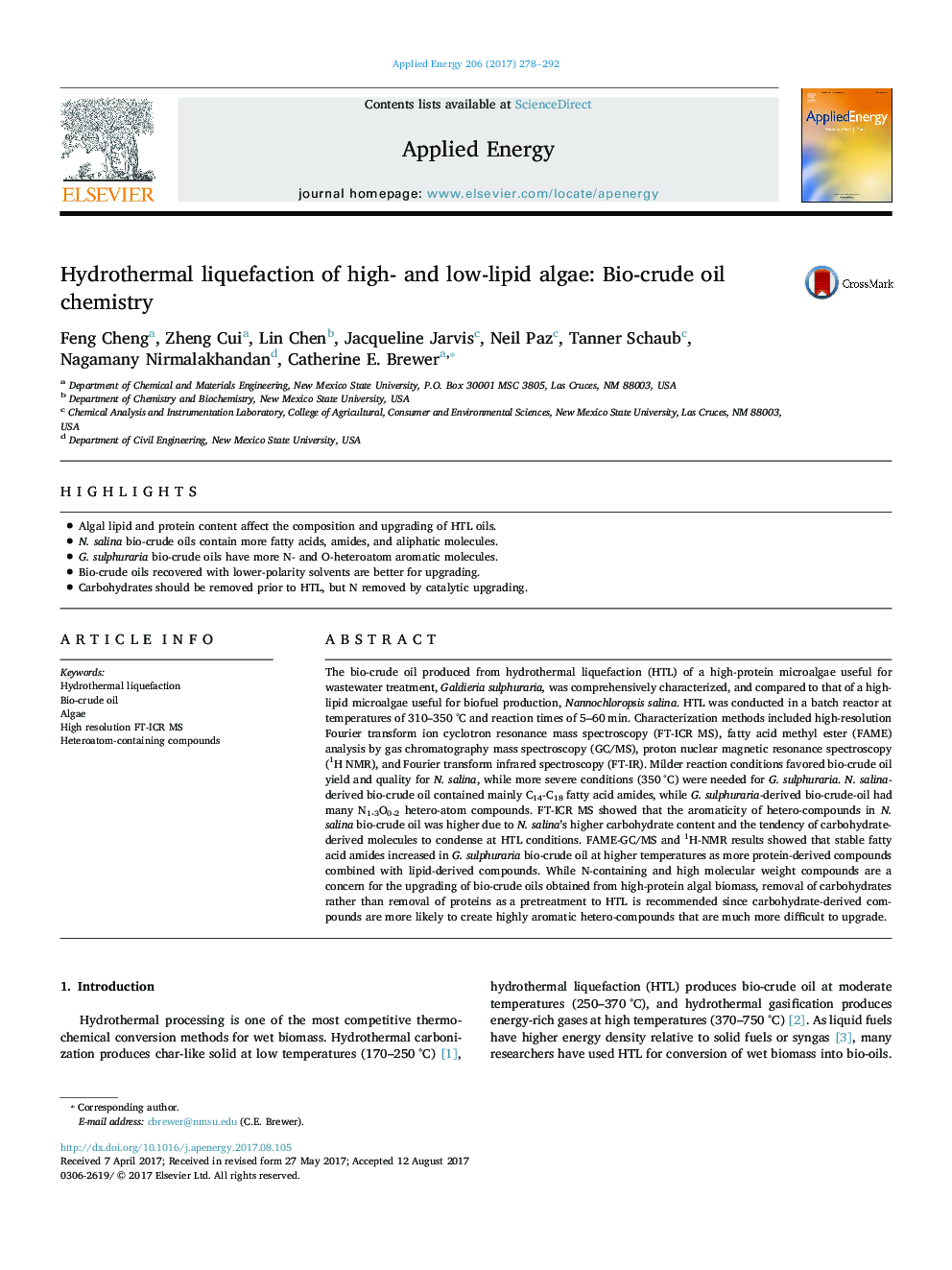| کد مقاله | کد نشریه | سال انتشار | مقاله انگلیسی | نسخه تمام متن |
|---|---|---|---|---|
| 4915677 | 1428084 | 2017 | 15 صفحه PDF | دانلود رایگان |
عنوان انگلیسی مقاله ISI
Hydrothermal liquefaction of high- and low-lipid algae: Bio-crude oil chemistry
ترجمه فارسی عنوان
مایع سازی هیدروترمال از جلبک های باالیی و کم چربی: شیمی بیو نفت خام
دانلود مقاله + سفارش ترجمه
دانلود مقاله ISI انگلیسی
رایگان برای ایرانیان
کلمات کلیدی
موضوعات مرتبط
مهندسی و علوم پایه
مهندسی انرژی
مهندسی انرژی و فناوری های برق
چکیده انگلیسی
The bio-crude oil produced from hydrothermal liquefaction (HTL) of a high-protein microalgae useful for wastewater treatment, Galdieria sulphuraria, was comprehensively characterized, and compared to that of a high-lipid microalgae useful for biofuel production, Nannochloropsis salina. HTL was conducted in a batch reactor at temperatures of 310-350 °C and reaction times of 5-60 min. Characterization methods included high-resolution Fourier transform ion cyclotron resonance mass spectroscopy (FT-ICR MS), fatty acid methyl ester (FAME) analysis by gas chromatography mass spectroscopy (GC/MS), proton nuclear magnetic resonance spectroscopy (1H NMR), and Fourier transform infrared spectroscopy (FT-IR). Milder reaction conditions favored bio-crude oil yield and quality for N. salina, while more severe conditions (350 °C) were needed for G. sulphuraria. N. salina-derived bio-crude oil contained mainly C14-C18 fatty acid amides, while G. sulphuraria-derived bio-crude-oil had many N1-3O0-2 hetero-atom compounds. FT-ICR MS showed that the aromaticity of hetero-compounds in N. salina bio-crude oil was higher due to N. salina's higher carbohydrate content and the tendency of carbohydrate-derived molecules to condense at HTL conditions. FAME-GC/MS and 1H-NMR results showed that stable fatty acid amides increased in G. sulphuraria bio-crude oil at higher temperatures as more protein-derived compounds combined with lipid-derived compounds. While N-containing and high molecular weight compounds are a concern for the upgrading of bio-crude oils obtained from high-protein algal biomass, removal of carbohydrates rather than removal of proteins as a pretreatment to HTL is recommended since carbohydrate-derived compounds are more likely to create highly aromatic hetero-compounds that are much more difficult to upgrade.
ناشر
Database: Elsevier - ScienceDirect (ساینس دایرکت)
Journal: Applied Energy - Volume 206, 15 November 2017, Pages 278-292
Journal: Applied Energy - Volume 206, 15 November 2017, Pages 278-292
نویسندگان
Feng Cheng, Zheng Cui, Lin Chen, Jacqueline Jarvis, Neil Paz, Tanner Schaub, Nagamany Nirmalakhandan, Catherine E. Brewer,
